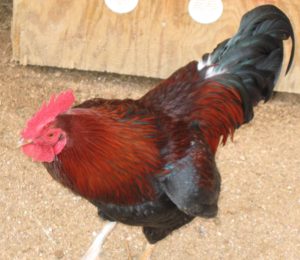 How painful are the meetings you attend?
How painful are the meetings you attend?
Probably worse than you’d like to admit.
If a pain detector could measure both the physical discomfort and social anguish you feel after your meetings, it could show scary outcomes with some unfortunate consequences.
For instance, the results could reveal spiked cortisol levels from all sorts of stress… Agonizing over making decisions on a timely basis…Feeling threatened by those who argue with you or discount your comments…. Worrying about not having enough time to focus on your higher-priority work.
Your muscles also could have tightened from having to sit still. You may feel groggy or cranky if your brain doesn’t get enough oxygen. The brain, which is your most-energy demanding organ, also needs healthy doses of glucose, a form of sugar, for thinking, learning and remembering.
Rather than continue to suffer, why not use the Chinese Year of the Fire Rooster as an opportune time to review and improve your meetings, or at least the meetings that you lead?
Roosters, especially fire roosters, are considered punctual, trustworthy and excellent at money and time management. All are great attributes for planning and leading meetings.
You can get started by focusing on these three steps: diagnose, design and deploy.
- Diagnose. Take 15 minutes at one of your regular meetings to ask what participants like about the meetings they attend and what could be better. In other words, do a “Plus Delta” evaluation.” Focus on the three phases of the meeting experience: before, during and after.You also can share the meeting pain points that I uncovered in my recent meeting effectiveness assessment and ask participants the extent to which these issues resonate with them. The top three problems are:
- unclear agenda and meeting objectives
- not enough preparation and follow-up
- weak meeting leaders who let meetings derail, especially in-person gatherings.
- Design. As mentioned above, view your meetings as experiences with three phases: before, during and after the meeting. Then design meeting elements to address your particular pain points.For example, for the individuals who took my meeting assessment, I’m suggesting that they take more time to prepare as well as provide stronger meeting facilitation. The preparation step needs to include creating and sharing an agenda, including meeting objectives.Your meeting design elements will vary based on the problems you’re solving for.
- Deploy. When launch new meeting elements, introduce them as a work in progress, not a finished product. In other words, experiment to determine what works for the type of meeting you’re holding and your participants. Adjust as needed.
Regardless of your actions, be sure to adopt brain-friendly meeting principles to keep participants’ attention, interest, and energy levels high to improve outcomes, including decisions. For more about these brain-friendly principles, check out How to create energy, emotion and edge in your meetings.
For each of the three steps (before, during, and after), ensure that you also involve participants to make the meetings more meaningful and memorable.
For example, for staff meetings, take turns preparing the agenda and leading meetings as a way to develop skills and stretch.
Also, rotate who takes the meeting notes. That way, everyone shares this important responsibility and understands the value of good follow up.
Look for opportunities for peers to share, learn from one another, and do joint problem solving or idea exploration and action plans. Meetings are great venues to take advantage of multiple brains, and peers appreciate and trust “people like them” more than authority figures. (See 3 ways to focus on employees to win back trust.)
You want to avoid the all-too-common meeting pitfall of peacocks posturing without advancing the agenda or adding value. Just read this write-in comment from the survey: “It seems to me that people spend most of their time in meetings thinking about how they can use the meeting to enhance their own standing (within their department, division, etc.) rather than actually listening to whomever is currently speaking.”
Discourage those peacocks, and instead embrace fire roosters to improve your meeting outcomes, including decisions. You’ll also increase productivity and meeting satisfaction, and you can crow for joy.
If you’d like to see the highlights of the meeting effectiveness survey results, email me.
And if you need any help with your meetings, also contact me.
Life is too short to suffer through bad meetings.

0 Comments